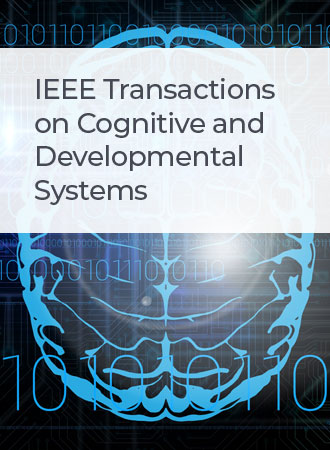揭开思想的面纱:脑电图脑信号解码为文本的进展回顾
IF 4.9
3区 计算机科学
Q1 COMPUTER SCIENCE, ARTIFICIAL INTELLIGENCE
IEEE Transactions on Cognitive and Developmental Systems
Pub Date : 2024-09-17
DOI:10.1109/TCDS.2024.3462452
引用次数: 0
摘要
近年来,利用脑电图(EEG)将大脑活动转化为文本的研究得到了极大的关注。许多研究人员正在努力开发新的模型,将脑电图信号解码成文本形式。虽然这一领域已显示出有希望的发展,但仍面临许多需要进一步改进的挑战。重要的是概述该领域的最新发展和未来的研究方向,以提供对当前技术状态的全面了解,指导未来的研究工作,并提高脑电图到文本系统的有效性和可访问性。在这篇综述文章中,我们全面总结了脑电图到文本转换的进展。首先,我们讨论脑电图文本转换技术是如何发展的,以及该领域仍然面临哪些问题。其次,我们讨论了该领域中使用的现有技术。这包括收集脑电图数据的方法,处理这些信号的步骤,以及能够将这些信号翻译成连贯文本的系统的开发。我们总结了潜在的未来研究方向,强调需要提高准确性,减少系统约束,以及探索不同领域的新应用。通过对这些方面的探讨,本文旨在为更广泛的用户基础开发更易于访问和有效的脑机接口(BCI)技术做出贡献。本文章由计算机程序翻译,如有差异,请以英文原文为准。
Unveiling Thoughts: A Review of Advancements in EEG Brain Signal Decoding Into Text
The conversion of brain activity into text using electroencephalography (EEG) has gained significant traction in recent years. Many researchers are working to develop new models to decode EEG signals into text form. Although this area has shown promising developments, it still faces numerous challenges that necessitate further improvement. It is important to outline this area's recent developments and future research directions to provide a comprehensive understanding of the current state of technology, guide future research efforts, and enhance the effectiveness and accessibility of EEG-to-text systems. In this review article, we thoroughly summarize the progress in EEG-to-text conversion. First, we talk about how EEG-to-text technology has grown and what problems the field still faces. Second, we discuss existing techniques used in this field. This includes methods for collecting EEG data, the steps to process these signals, and the development of systems capable of translating these signals into coherent text. We conclude with potential future research directions, emphasizing the need for enhanced accuracy, reduced system constraints, and the exploration of novel applications across varied sectors. By addressing these aspects, this review aims to contribute to developing more accessible and effective brain–computer interface (BCI) technology for a broader user base.
求助全文
通过发布文献求助,成功后即可免费获取论文全文。
去求助
来源期刊

IEEE Transactions on Cognitive and Developmental Systems
Computer Science-Software
CiteScore
7.20
自引率
10.00%
发文量
170
期刊介绍:
The IEEE Transactions on Cognitive and Developmental Systems (TCDS) focuses on advances in the study of development and cognition in natural (humans, animals) and artificial (robots, agents) systems. It welcomes contributions from multiple related disciplines including cognitive systems, cognitive robotics, developmental and epigenetic robotics, autonomous and evolutionary robotics, social structures, multi-agent and artificial life systems, computational neuroscience, and developmental psychology. Articles on theoretical, computational, application-oriented, and experimental studies as well as reviews in these areas are considered.
 求助内容:
求助内容: 应助结果提醒方式:
应助结果提醒方式:


